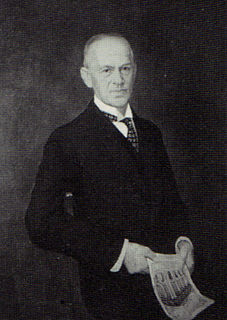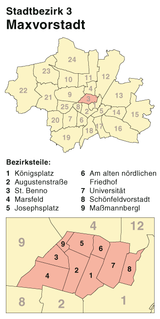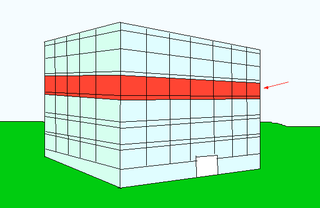
Jakob Heilmann was a German contractor.

Georg Wertheim was a German merchant and founder of the popular Wertheim chain of department stores.

Max Littmann was a German architect.

The Kaufhaus des Westens, usually abbreviated to KaDeWe, is a department store in Berlin. With over 60,000 square metres of selling space and more than 380,000 articles available, it is the second largest department store in Europe after Harrods in London. It attracts 40,000 to 50,000 visitors every day.

Hermann Tietz was a German merchant of Jewish origin. Tietz was born on 29 April 1837, in Birnbaum an der Warthe near Posen and died on 3 May 1907 in Berlin). He was buried in the Weißensee Cemetery.
Arcandor AG was a holding company located in Essen, Germany, that oversaw a number of companies operating in the businesses of mail order and internet shopping, department stores and tourism services. It was formed in 1999 by the merger of Karstadt Warenhaus AG, founded in 1920, with Quelle AG, founded in 1927. In 2005, the corporation had about 68,000 employees and annual sales of €15.5 billion. Its stocks were traded on the Mid Cap DAX until September 2009. The company's largest store was Kaufhaus des Westens (KaDeWe) in Berlin, and the largest store operated by Karstadt was in Frankfurt.

Galeria Kaufhof GmbH is a German department store chain whose headquarters are in Cologne. Until 30 September 2015, the company was a subsidiary of Metro AG, when the company announced that it had been acquired by Hudson's Bay Company. In September 2018 they announced plans to merge with their largest competitor Karstadt.

The Justizpalast Munich are two courthouses and administrative buildings in Munich.

Horten AG (Aktiengesellschaft) was a German department store chain founded by Helmut Horten in 1936 and headquartered in Düsseldorf, Germany.

The Dachauer Straße is the longest street in Munich with a length of 11.2 km and is received its named since it is the connecting road to Dachau Palace. In the north of Munich, it is part of the Bundesstraße 304.

Hermann Wronker AG was a German department store chain. Its holdings included the largest department store in Frankfurt before World War II.

The Sterneckerbräu was a brewery in Munich, Germany. The associated inn served as a meeting place for the first branch of the German Workers' Party (DAP), which later changed its name to the Nazi Party (NSDAP). Similar to the Bürgerbräukeller, it was a place of pilgrimage for the Nazi movement. The building is now used as a residential and commercial building and is a registered monument on the Bavarian monument list.

Karstadt in Bremen is the largest department store in Bremen. It is located on Obernstrasse and Sögestrasse, in the old town in the city centre. Completed in 1932, the building was listed in 2010 as a notable example of department store architecture in the interwar period.

The Einkaufs-Center Neuperlach – pep is a shopping mall in Munich's Neuperlach borough operated by ECE. With a floor space of 60,000 square meters and about 135 specialty shops, it was according to a survey for the year 2002, the most profitable shopping center in Germany, the average revenue per square meter was twice as high as the national average. In designing the state capital, it is recognized as an integrated site with the function of a district center, and through its size has an important role for the entire southeast of the metropolitan Munich.

The Görlitz department store in Görlitz is one of the best preserved department stores from the beginning of the twentieth century. It is built in the Art Nouveau style and was operated as a department store until August 15, 2009. The city and a citizens' action group tried to revitalize the department store which in 2012 housed only a beauty shop. In 2013, a private investor was found, who would like to obtain the facility as a universal department store, as the Department Store of Upper Lusatia and thus a counterpart to the Berlin department store Kaufhaus des Westens (KaDeWe).

The Seven is a real estate project in the Munich Gärtnerplatz district, City area Ludwigsvorstadt-Isarvorstadt. In a former heating plant of the city of Munich, luxury properties were built.

]] in Munich's Old Town. Here is a large number of retail shops and restaurants to be found.



























